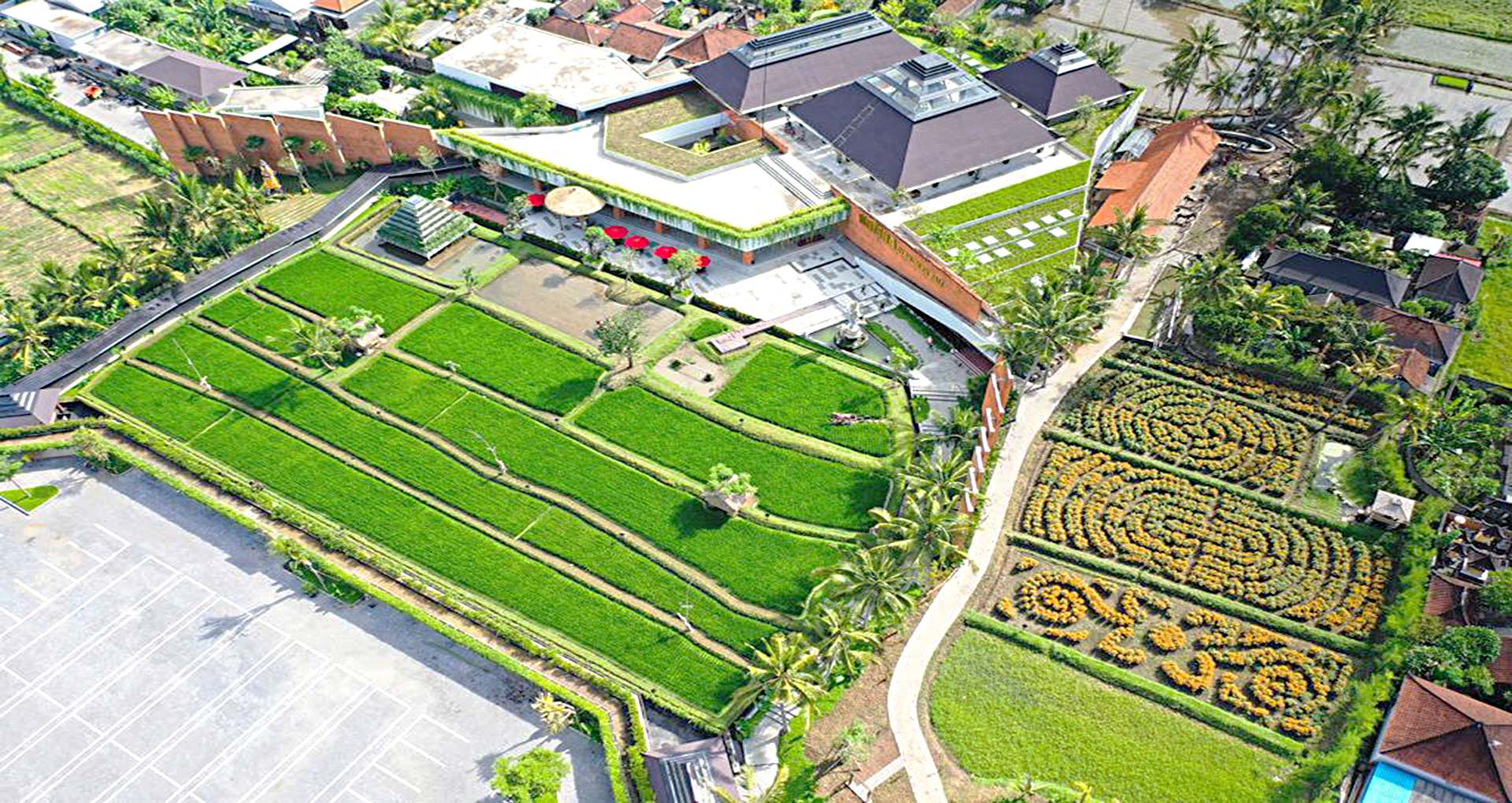

Architect : Somia Design
designer incharge ARC : Widiadnyana, Andika P.
designer incharge ID : -
Location : Desa Blangsinga, Gianyar, Bali.
Land area : 2,4 Ha.
Floor area : 7210 sqm.
Photographs : -
Starting from the desire to empower rural economic and communities through tourism development with natural & cultural potential that Blangsinga Village can offer, Krisna Souvenir Center is designed to offer a shopping and traveling experiences that are interactive with nature and with the local villagers.
Located in the midst of rural environment, the building tries to avoid being an alien that looks so strangely different from the surrounding environment. This was one of the issues to be addressed other than the main focus of presenting a commercial building that bears strong identities as a representation of a Balinese souvenir shop, which has already been widely known on a national scale.
The decision to retain most of the existing rice fields on the development site is a very important initial planning decision. The existence of the existing rice fields in the middle of the land is an attempt to show that nature and its built environment are integral entities in this design. The unity of nature and the built environment also plays important role in creating the procession experience when entering the retail buildings.
The selection of red brick material that appears to dominate the appearance of the building façade is supplied from Tulikup Village, a nearby village located only about 20 minutes away from Blangsinga Village. The use of local red brick material sends a message that the objective of the presence of Krisna Souvenir Center in Blangsinga Village is to bring significant social & economic impact to the local communities.
The dominance of the red brick material is emphasized by the presence of large brick walls stretching on both sides of the retail buildings. The shape, composition, and color of the brick walls create the impression of acceptance/welcoming gesture as well as a form of celebration & complimentary to the nature and the surrounding environment.
The composition of the retail buildings that looks rigid & heavy at the bottom is the result of functional requirements where large and enclosed areas for storage and product display must be provided. Some retail areas are also sought to get natural lighting from the skylights to reduce the burden of electricity usage during the day. At the top part, the building is designed with a separate & more open composition so that natural air can freely flow and can maximize visibility towards the nice view around the building. The pyramid-shaped roof with high volume and wide overhang is chosen due to its resemblance to the local traditional roof and due to its ability in optimizing the building performance in the tropical climate context
